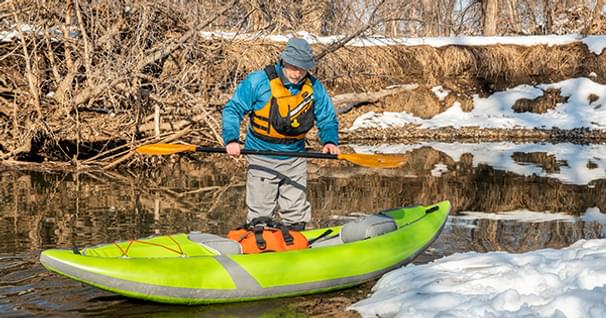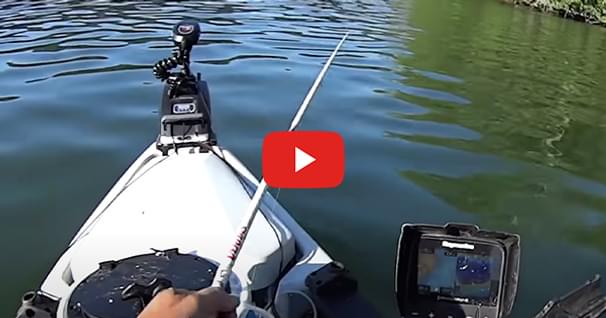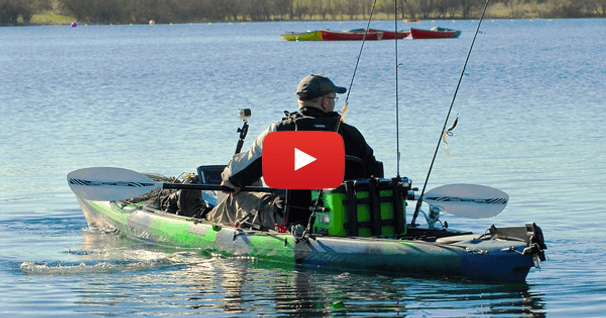Seal Entry - Whitewater
The seal entry involves sliding off the shoreline and dropping into the river. The seal entry is a fun way to start your day and, on rivers with steep banks, it can be the only way of getting on the water. If done right, you can seal launch from fairly high up, but the higher you go, the smaller the room for error and the bigger the potential consequences. A botched seal launch from any significant height is a great way to hurt your back or damage your boat.
Seal launching is a skill like any other, and just as you wouldn't start by running a twenty-foot waterfall, you shouldn't start with a ten-foot seal launch. The first order of business is establishing whether or not the potential seal launch spot has a deep landing zone. You then need to pick your line, which means choosing where you want to slide off the rock. This will of course dictate where you get into your kayak. Ideally, a buddy can hold your boat and paddle while you get in; otherwise you'll have to find a flat spot or something to brace against. When it comes time to launch, there's a good chance this same buddy will be eager to give you a push off the rock. This can sometimes be helpful, but unless he or she has some experience in launching paddlers, it's probably better to do it yourself. At least this way you will only have yourself to blame!
When launching, hold your paddle with your control hand and use your other hand to push yourself off. This push-off will play a huge role in the success of your seal launch. The speed and trajectory with which you launch will be different for every situation, but the desired result of your seal launch will be the same. Ideally, you'll enter the water straight, with your kayak on a seventy- to eighty-degree angle so that you pencil into the river. This slightly off-vertical angle will let the rocker and the buoyancy of your kayak bring your bow to the surface in a smooth arc. If you launch with too little speed, your kayak is likely to stand up too vertically, or even rotate past vertical, which is referred to as "going over the handlebars." If you launch with too much speed, there's a good chance that you'll land flat and hard on the water, which is particularly dangerous for the back.



The last thing to consider is where to hold your paddle as you hit the water. The goal is that when you make contact with the water, your paddle doesn't come up and whack you in the face or strain your shoulders. With this in mind, you can hold it slightly over your head or along one side of your kayak so that it pierces the water like your kayak does. Holding your paddle just above your head can be appropriate for small drops, but avoid holding it too high. Never hold your paddle right in front of your face, either - or you won't be the first paddler to finish a seal launch with a bloody nose!



Ken is a World Champion Kayaker and the author and producer of an award winning series of instructional kayaking books and videos. He was recognized by "Paddler Magazine" as one of their 'Paddlers of the Century'. For more information, visit www.helipress.com.
Related Articles
Flexibility is always a good topic of discussion when it comes to kayaking. Depending on our style of…
Kayak Catfish does some trolling with crappie magnets to catch some catfish bait.
How many of you have ever heard that paddle craft (vessels under oars according to the Navigation Rules)…
More times than not, the reason you aren't catching big fish is not because you aren't doing enough…



